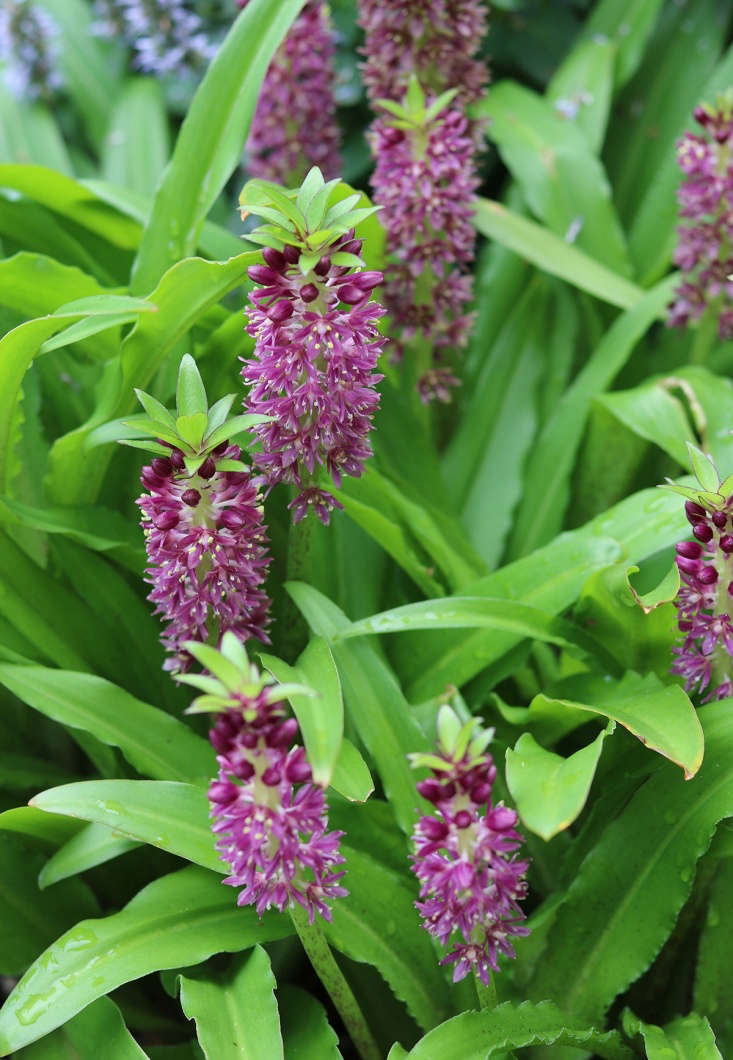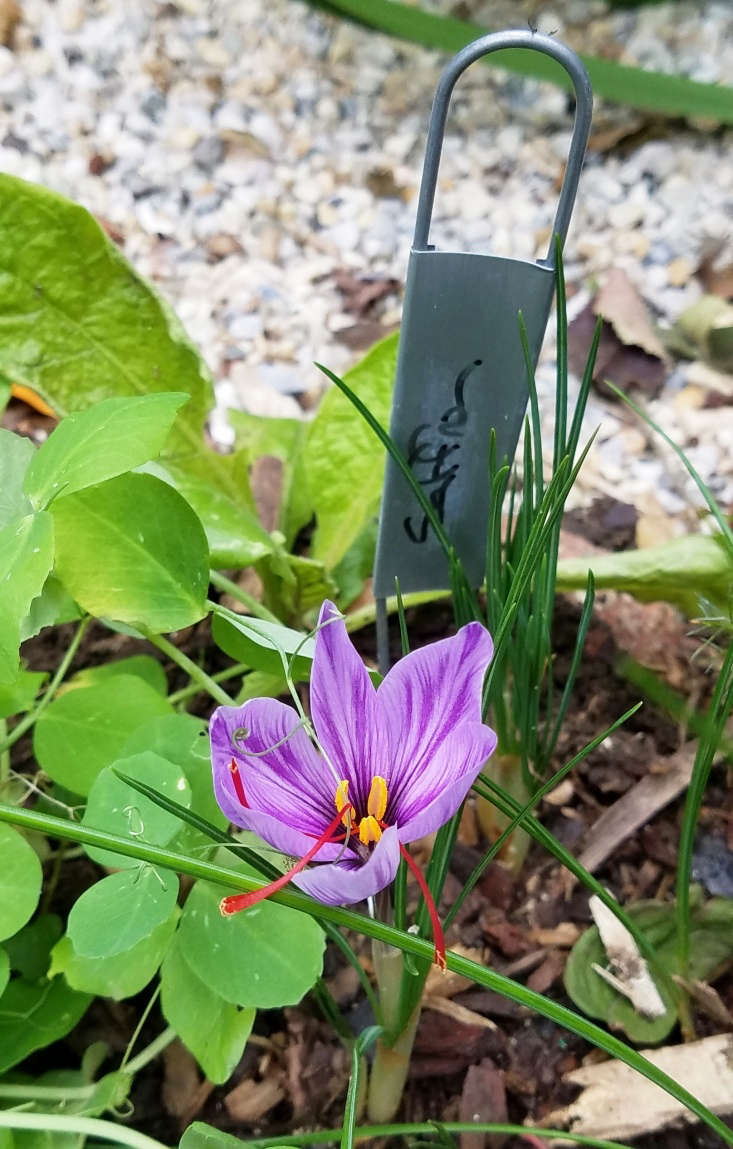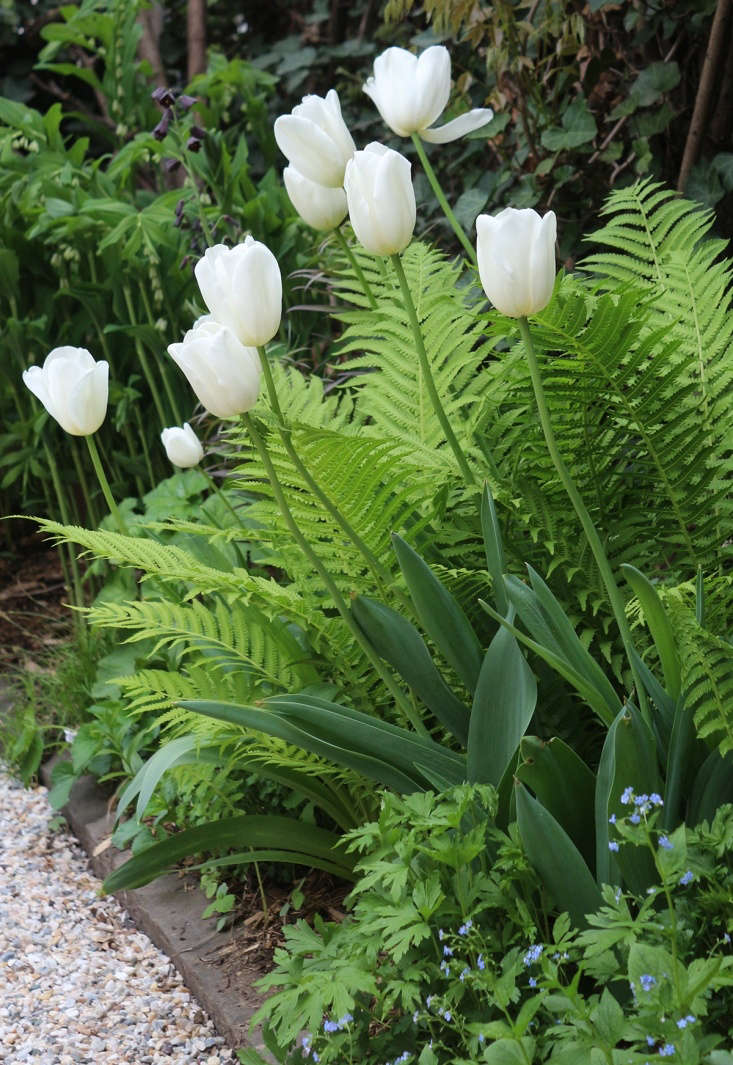February doesn’t need to be the low point of the gardening year. A safe way out of darker days and enforced inactivity is planning and reflection: Now is the time to go through seed and bulb catalogs and to choose flowers that do well in your garden.
Because I feel starved for soil and light in this short month that feels so long, I sometimes choose with my heart rather than with my head, falling completely for the catalog eye candy. Like grocery shopping while hungry. But this year I decided to be more restrained, to review my 2017 gardening successes, to get over what failed (Eremurus, Camassia, oh dear) and to order or propagate more of what really worked well in my Brooklyn garden. For February therapy, here are ten plants to consider:
Photography by Marie Viljoen, unless otherwise noted.
Allium ‘Mount Everest’

Planted in front of an ivy-covered wall and fence in our garden last year, these elegant onion relatives provided a sense of depth and slender height in shallow beds. The snowy flowers also lasted for weeks from late spring into early summer. Their sculptural seed heads stayed intact right up to the first snowfall. I want more. Personally, I feel alliums planted in spring perform very well, but in the States they are not often available beyond fall. I may have to wait.
See a dramatic meadow of Allium ‘Mount Everest’ in one of our favorite garden designs in Gatehouse Garden: A Dramatic Black Backdrop for a White Wildflower Meadow.
Pineapple Lilies

Last summer these natives of my homeland, South Africa, surprised me. In Brooklyn, in our USDA Zone 7b, I planted large, ivory-spiked Eucomis autumnalis and diminutive Eucomis ‘Leia’ (with petite purple blooms) in pots 16 and 14 inches in diameter. The pots received six hours of sun a day at the height of summer, but by the time the plants bloomed in August that was already down to four. Nevertheless, their strikingly elegant, intricate flowers were attractive for a generous six weeks. Bees were drawn to the flowers.
In late fall I lifted some of the bulbs and am overwintering them in small bags with peat moss in the crisper drawer of the refrigerator. The rest I have left in their large pots, protected by a sheet of clear plastic held in place with a large rubber band (this is to prevent accumulated snow from slowly melting into the pots and causing them to rot). It is an experiment; they are hardy to USDA Zone 7, but the freeze-thaw cycle in pots can be brutal.
I definitely want more of these long-lasting, low-maintenance flowers and lush leaves in the summer garden, so I have ordered more pineapple lilies for spring planting. For the best results plant them in groups of three or more.
Dahlia ‘Nuit d’Ete’

This somber, velvety-red to bloody-burgundy dahlia is compelling. Planted in pots the plants grow tall—two to three feet—and produce flowers from early summer through fall, as long as they receive ample water. They are excellent cut flowers, too. When I dug the plants up at the end of the season, their long, fingerlike tubers were fat and prolific. They are also overwintering in the crisper drawer (in bags with some peat moss), and I have ordered more. Plant these tall dahlias in roomy pots or toward the middle of sunny beds.
Lilies

I do not think any of my New York gardens have been without elegant regal lilies (Lilium regale). As my gardening space has grown (from 66 to 400 to 1,000 square feet), I have simply needed more. They are classically elegant, add height and loose structure to the garden, and are perfumed when we eat our suppers outside, almost every summer evening. ‘Silk Road’ ($7.50 each) is another garden fixture, sent to me once as a bonus bulb by The Lily Garden, with an order. My collection now provides amazing stature—the in-ground lilies grew to more than six feet last summer. They also perform very well in pots.
Saffron

Harvesting my own saffron is one of the most exciting things I have ever done in any garden. My tiny crop from 50 fall-blooming bulbs was enough for a couple of very good bouillabaisses and a risotto. Once you have picked out their red stigmas to dry, keep the pretty flowers in an egg cup of water. They will last for three days and delight you with their rich perfume. Bonus: The bulbs are inexpensive and easy to grow. (If you live in area with voles, plant them in trenches lined with chicken wire. Fold the wire up over them and cover with soil.)
The plants take up very little room, and I will be adding more. I overplant them with annual crops for the spring and summer months (when the leaves are dormant).
Ostrich Ferns

Much of my backyard garden is very shady, growing in the shadow of the tall townhouse whose garden apartment we inhabit. I became interested in indigenous ostrich ferns (Matteuccia struthioterus) from a foraging point of view—they are the source of the sought-after edible spring fiddleheads—but I now also value them for their graceful structure, feathery texture, easy propagation, and the fact that they absolutely thrive in shade.

Milkweed

The forager in me grows edible common milkweed, Asclepias syriaca, to test its behavior in a garden setting (it has a mind of its own). Its blooms are lavish and richly scented. I also grow better-behaved swamp milkweed (A. incarnata, above) for pollinators, especially monarchs, whose larvae feed only on milkweed, while the butterflies are drawn to the flower’s nectar. Right on cue, the monarchs arrived in July. So I am adding a couple more plants, in pots. Their flowers are long-lasting and the subsequent seed capsules have significant ornamental appeal through late fall.
My milkweed comes from the excellent Gowanus Nursery in Brooklyn, as well as the local hardware store. Monarch awareness is growing and different species of Asclepias are increasingly available.
Nicotiana

Tall Nicotiana adds an airy height to tight spots. I like statuesque N. sylvestris for its delicately pendulous white flowers and night perfume, and N. mutabilis for the fetching way its dainty flowers change color over time, from rose to white. N. alata (above) has more upright, scented blooms that are luminous in the evening. A very sweet bonus is that hummingbirds are drawn to the tubular blooms; they visit our garden in September.
Dwarf Gray Sugar Peas

This gorgeous cool weather crop is as beautiful as it is edible. My peas twined up garlic scapes and foxgloves—they integrate well in a mixed bed. Harvest their edible flowers, tendrils, and tender foliage (as well as the pea pods, of course). Plant them as soon as the soil can be worked.
Citrus

The citrus bug has nipped me hard. My two potted Thai lime trees (Citrus hystrix) have thrived. They provide me with more of their distinctive double leaves than I can use, and they make a fine and unusual gift for friends who love to cook and mix drinks.

In May I move the trees to the backyard for the summer. They spend their winters indoors in two south-facing windows. Enthused by their success, I now also have a Meyer lemon and have ordered an Australian finger lime, which will arrive as soon as shipping temperatures are safe. The thought of harvesting its distinctive citrus-caviar fruit is thrilling.
If you’re planning your spring garden, see more ideas:
- Expert Advice: 10 Tips to Get Your Garden Ready for Spring
- Foxgloves 101: A Field Guide to Planting, Care, and Design
- Dirty Secrets: 10 Ways to Improve Garden Soil
- Columbines: 5 Favorite Springtime Flowers
- Perennials 101: A Field Guide to Planting, Care, and Design








Have a Question or Comment About This Post?
Join the conversation